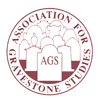


Found this intriguing example of a vernacular concrete marker in the Cedar Hill Cemetery in Scottsboro, Alabama, on Saturday. The Cedar Hill Cemetery is located directly behind the Unclaimed Luggage Center so both it and the marker were purely serendipitous -- wasn't looking for either, but spotted the entrance sign to the cemetery when we pulled into the parking lot for the Unclaimed Luggage store. I wasn't really sure if it was concrete or not until I got a good look at the top and could see the overlap between the front and back sides. The duplication of two motifs often in late 19th, early 20th century markers -- the clasped hands and the open book -- had me initially wondering if it was actually a commercial limestone marker. There are times when it can be hard to tell the difference between a vernacular limestone and a vernacular concrete. A close examination, though, revealed the maker of the stone sculpted it from concrete. Definitely a more ambitious effort than the typical simple tablets or slabs one usually finds when cement is the chosen medium.
Cedar Hill Cemetery is a large community cemetery with sections dating back to the 19th century. It is an active cemetery, and includes a number of nice examples of contemporary markers with the personalizations that are once again becoming fairly commonplace, e.g., portraits of the deceased.


2 comments:
I don't know why it has taken me so long to read your blogs, but I have to tell you that I love this blog for its historical aspects.
We live down the road from a church cemetary and I find it fascinating to visit there and read the headstones. There are whole families buried there and I'm struck by the sense of family, even in death.
I'm adding this and All the Good Names Were Taken to my blogroll at PoliTits. I hope that's okay with you.
Definitely, and I'm reciprocating on All the Good Names. Haven't started building a blogroll for this site yet.
Post a Comment